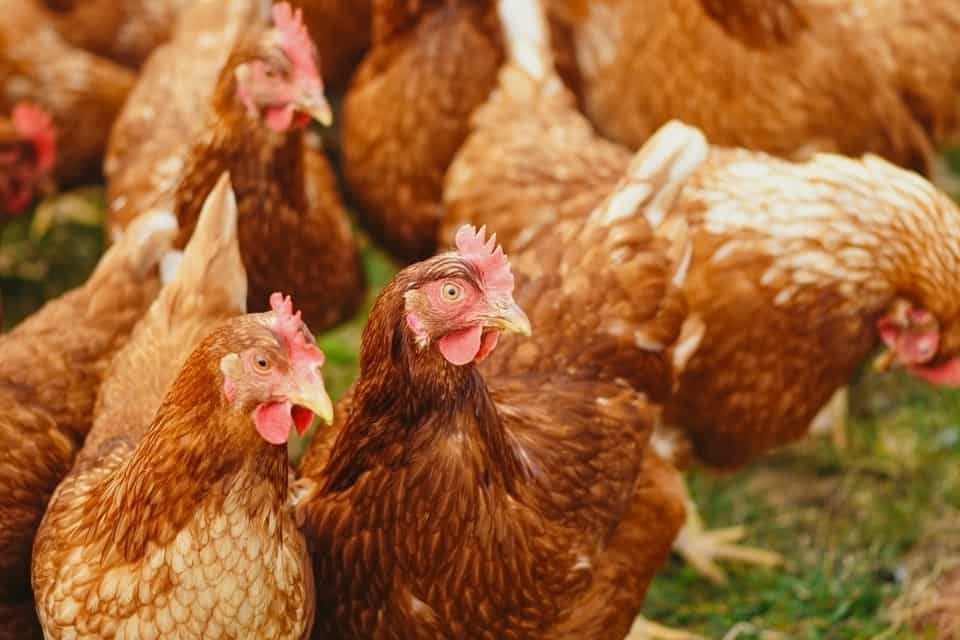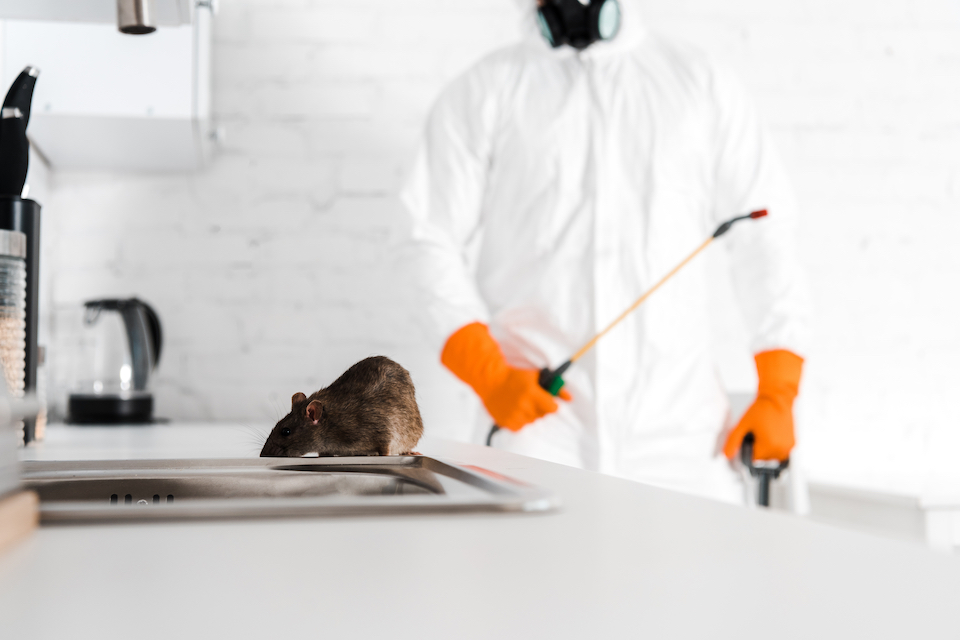Introduction
If you are considering raising chickens in your garden to benefit from free fresh eggs and weed removal to improve the look of your backyard, then this guide will help you understand everything you need to know. This includes what rearing chickens entails, the rules surrounding keeping chickens, what you need as well as a step by step guide on how to build a chicken coop.
Why Should You Raise Chickens?
Raising chickens may seem like a bizarre hobby. However, it provides several benefits which we’ll dive into below.
Free Eggs

One of the biggest advantages of raising chickens is that they lay fresh and nutritious eggs every week. You can also control what you are putting in your body, as you will know exactly how healthy the eggs are as you are the one feeding the chickens. You can also profit from selling your fresh eggs at a local market, which is also an ideal way of teaching kids the value of money and providing them with some pocket money.
Quality Fertiliser
Something you may not know about chickens is that their manure is one of the best sources of natural fertiliser as It contains vital ingredients such as potassium, nitrogen and phosphorus which are typically found in garden fertilisers. You can benefit from these ingredients without having to pay for a new fertiliser every time you run out. You can compost chicken manure and use it on your entire garden including your lawn, flower beds, shrubs and trees.
Weed and Insect Control

Another benefit of raising chickens is that they can help to remove any weeds in your garden by just adding their manure to the soil. They are also great for insect control as chickens tend to eat snails, slugs, bugs and any other small insects that may be ruining your garden.
Waste Disposal
If you want to cut down on food waste, then having chickens can help with this, as they usually eat anything. So instead of throwing out unwanted food, you can give your chickens vegetable peelings, fruit, nuts, seeds, rice and more.
Low Maintenance Pets

Another advantage of rearing chickens is that they are great pets as they are very playful and loving, making them an ideal pet for young children. They are also straightforward to care for as they simply need to be fed and watered and given a comfortable coop to nest in.
Am I Allowed to Have Chickens?
If you are planning to raise a few chickens in your backyard, then there are no rules in place to oppose this. However, if you are planning to raise over 50 birds, then you will need to register them with the Department for Environment, Food and Rural Affairs (DEFRA).
There are some restrictions in place which restrict profiting from chicken raising. For instance, the 1950s Allotment Act states that you can keep hens on an allotment as long as you don’t use them for business purposes.
Under the Protection of Animals Act and Welfare Act, you must provide appropriate care for chickens by offering suitable food, water and housing. Adequate housing for chickens is usually a chicken coop which enables them to demonstrate their typical behaviours such as living with other chickens, nesting, roosting and scratching.
Aside from these laws, you should also check your rental restriction before buying chickens. Some landlords prohibit animals from living inside or outside of a property.
Choosing the Right Chicken Breeds
Before buying chickens to raise, it is essential that you understand the different breeds of chicken breeds so you can select the right ones for you. To help you, below is a breakdown of the various chicken breed types.
Araucana

Araucana chickens originated in South America and Spain and are the only living chicken breed with feather tufts over their ears. You will find Araucana large fowls or bantams which tend to lay around 170 to 200 sizeable blue eggs a year with the colour covering the entire shell surface.
Compared to other chicken breeds, Araucana birds are on the smaller side, although they grow quicker than most. Because of this, they prefer to be housed in a large coop or may be more suitable for a farm which offers more freedom.
One of the downsides of choosing Araucana chickens is that they have a high mortality rate due to the tuft gene which makes it more difficult for baby Araucana chicks to hatch, so only experts should care for these birds.
Barnevelder
Barnevelder chickens are medium to large-sized hens with Dutch origins that are known for laying dark brown eggs. They are available as large fowls or bantams and are a mixture of Dutch fowl, Langshan, Brahma and Cochin with colours ranging from black, blue, silver blue, white and silver. They are also known for their brown feathers with double black lacing that creates an arrowhead aesthetic.
This type of chicken is known as one of the laziest breeds, so you do not have to keep them free-range, as movement around a chicken coop should suffice. They tend to lay around 3 to 4 large eggs a week throughout the winter, which is attractive to many chicken owners.
While Barnevelders are known as robust birds that can survive in various climates, they are prone to Marek’s disease, which is a highly contagious virus, so vaccination is a must at birth.
Brahma

Brahma’s are known as the king of chickens - as they are one of the largest breeds and therefore require a large chicken coop or a free-range farm. This type of chicken has an Asiatic background and originates from jungle fowls and cochins.
Brahma chickens are non-flying birds with feathered feet which lay around 120 medium-sized eggs a year. While they are recognisable by their feathered feet, they can have three different feather types which distinguish them, including light, dark and buff patterns.
While their feathered feet are what makes them stand out, this can cause them to suffer from scaly leg which is caused by a parasitic mite infestation, so they may need to checked and cleaned regularly to prevent this. Despite their calm demeanour, they are also large and intimidating, which may not be suitable for children.
Black Rock
This type of chicken is a combination of a Rhode Island Red and a Barred Plymouth Rock which was specifically bred for free-range egg production. It can lay around 280 brown eggs a year.
Black Rock chickens are known for their docile and resilient behaviour which makes them ideal for free-range environments where they can last up to six years. You can also identify them by their distinct copper neck markings and black colouring.
While this breed is known for having a passive character, they do tend to scratch and dig a lot which may cause damage to your land, although their manure can solve these issues.
Calder Ranger

Calder Ranger chickens are another hybrid breed which is a cross between a Rhode Island red and a White Sussex. You can keep them inside, but they are usually kept in a free-range capacity and can lay an impressive 320 eggs a year.
This breed of chicken is typically recognised by its beautiful tail feathers which are generally white or black, while the chicks usually are yellow with two brown stripes down their back.
They are known for being tame and friendly, although you need to be careful when handling them, especially when you touch their tailfeathers as they can be sensitive.
Bluebell
This type of chicken is a hybrid French Maran bird which was bred to simulate Rhode Island Reds and Maran hens. They are known for their calm temperament and the ability to lay up to 260 eggs a year.
Bluebell chickens get their name from their decadent blue feathers making them one of the most attractive-looking breeds. It also one of the friendliest chickens so they are an ideal choice if you have children.
While they are generally docile, you should warn your family members not to pick them up as they do not enjoy being handled too much.
Sussex
This is another dual-purpose utility bird from the Roman which provides a generous 260 medium to large brown eggs annually. They are also available as large and bantam fowls, so the egg production may vary depending on the size.
Sussex chickens come in a variety of approved colours including brown, buff, coronation, light, red silver, speckled and white. The darker chickens typically have red eyes while the lighter breeds have orange.
You need to be aware of getting Sussex cockerels as they can be quite aggressive, so these may not be the best choice for kids.
Cochin

Cochin chickens are a decorative and quiet breed which were used initially as a utility bird for meat and eggs. They are a medium-sized breed which usually produces up to 200 eggs a year with colours ranging from cream to light brown.
This type of chicken is large and has soft fluffy and feathered feet which makes it hard for them to fly. They are also known as one of the least destructive birds as they do not tend to dig or scratch at the ground.
If you are looking to breed chicken for meat, then this may not be the best option as Cochin breed tends to be coarse.
Dorking
Another utility breed is the Dorking. These were initially used for meat and eggs by the Romans. They are usually kept free-range, although they are docile by nature so can be housed in a chicken coop.
You can identify Dorking chickens by their five-toed feet, single comb and red earlobes. In terms of production, the hens tend to hatch around 200 sizeable white shelled eggs in a year regardless of the climate.
This breed is susceptible to frost damage on their large single combs, so precautions such as Vaseline need to be taken to protect them during the winter months.
Cream Legbar

Cream Legbar chickens are an autosexing hybrid, which means the sex of the bird can be identified by the different markings when they hatch. For instance, males tend to have spots of colour on their heads which then spreads across the body.
This breed is usually a cross between Brown Leghorns, Barred Plymouth Rocks and Araucana and typically features a crest on the top of its head. They produce around 18- eggs a year which are a mixture of blue and green.
One thing you may have an issue is the noise that Cream Legbar chickens produce as they tend to be noisy and may wander off due to their inquisitiveness.
Marans
Marans are a medium to large-sized breed which originated in France. They were used for fresh poultry due to their slow growth and robustness and make an ideal choice for beginners to raise in the garden. That’s because they are incredibly docile and tend to produce around 150 large brown eggs a year.
Marans have various appearances, with colours ranging from black-tailed buff, cuckoo, black, golden cuckoo, wheaten and copper. They also usually have orange eyes with pink or slate shanks, as well as white on the bottom of their feet.
It may be hard to come across a Maran chicken as they usually are utilised to mix with other breeds to produce autosexing chicks.
Dutch Bantam

The Dutch Bantam is the smallest pure breed bantam chickens with rather large queens. This enables them to fly quite well, making it suitable for free-range and coop housing for hobbyists and beginners.
The hens lay around 160 white or cream eggs and are typically recognised by their hand-of-cards style feathers. While the cocks are similar to large roosters, they are a lot smaller and have distinctive white ears.
While they are easy to handle, Dutch Bantams may not be able to withstand cold weather conditions, so may need to implement heating precautions to protect them during winter.
Marsh Daisy
Marsh Daisy chickens were first established in Lancashire during the 19th century. However, they are now known as one of the rarest breeds in the world. They are also one of the most robust and economical chicken breeds available, as they do not tend to eat a lot, although they are susceptible to most weather conditions.
This breed of chickens is recognised by its rose comb which resembles the Marsh Daisy flower, as well as its white earlobes and green legs. They usually produce around 100 to 150 small lightly-tinted eggs per year.
The production of eggs is quite low in comparison to other breeds and is normally due to their slow growth, although this is one of the reasons why breeds like to look after them.
Speckledy
One of the most modern free-ranging hybrid breeds is the Speckledy chicken which is a cross between a Rhode Island Red and a Maran Descent which can be seen through its feathering. This combination enables them to provide around 260 dark brown eggs per year while also being one of the most placid breeds.
This breed is ideal for children as it takes well to handling and is also extremely friendly and playful, which means they are suitable for free-ranging while also offering great foraging benefits.
Speckledy chickens tend to be quite shy, so if you are planning to get them and have your children handle them, you should explain to them that the chickens need time to acclimatise.
Orpington

Orpington chickens are a type of British bird which were bred for the dual-purpose of meat and egg production. The original breed was a cross between a Minorca, Langshan and a Plymouth Rock with its colours including black, white, bluff and splash.
The majority of Orpington chickens tend to produce around 170 to 200 light brown eggs a year, although this will vary depending on whether you choose a large fowl or bantam. Orpington’s are also known for their single comb with five points and its red eyes and earlobes.
The Orpington breed may be hard to get a hold of as it was considered endangered in 2016. However, the numbers are increasing again.
Old English Game
This breed is a descendant of the old pit game birds which were utilised for cockfighting. They are known as one of the hardiest birds and are good fliers, so they are usually not suited to coops and instead prefer open free-range land.
Old English Game chickens are available in various colours including black red partridge, black red wheaten, brown red, spangle, birchen and many more. The hens tend to lay up to 150 per year, so they are ideal for experienced hobbyists.
This type of chicken is one of the noisiest and flighty breeds which may not be ideal if you living in a high-traffic area with a lot of neighbours as the disturbance may annoy them. You should also avoid housing cockerels together as they will fight to the death.
Pekin

Another true bantam is the Pekin chicken which is ideal for small gardens, as they extremely docile and therefore will not destroy your backyard.
Pekin’s are an adorable and attractive breed due to their fluffy feathers and small stature, which makes an ideal pet for children. Due to their small size, they only produce around 95 small cream eggs a year, although the hens are usually excellent mothers.
The problem with Pekins is that they need an area to dry off their fluffy underskirts, especially in muddy weather conditions.
Poland
Poland chickens are a European breed which originated from the Netherlands. They usually lay around 200 medium-sized white eggs, although you may get more, as in France they are known as one of the best breeds for egg production.
You can recognise a Poland chicken by its distinguishing top hat-like feathers and its protuberance which is a bulbous comb. They are also available in various colours including non-beard white-crested black, golden white and silver as well as bearded golden, white, silver and buff laced.
This breed can be quite high-maintenance as its dramatic headdress may cause problems such as lice, so extra care needs to be taken during feeding.
Rhode Island Red

This breed is one of the most popular utility birds and is widely used in the UK for egg production, due to its ability to lay up to 300 brown eggs per year. Because of the level of production, they are generally used on a free-range basis and can withstand hard weather conditions.
Rhode Island Red chickens are available as large fowls and bantams with both being a good option for first-time chicken owners. They are also good to look at with their deep red plumage which makes them stand out from other breeds.
This type of chicken can be short-tempered with other breeds so you may want to keep them separate, although they are great with humans.
Silver Spangled Hamburg
This breed is one of the rarest birds, although they are known for their high-quality egg production, as they tend to lay around 200 china white eggs a year at just 4 to 5 months of age.
If you are looking for an affordable chicken breed, then this is one of the best options as they tend to eat a lot less than other birds. They also prefer to forage and live in a free-range environment which may cost less than building a chicken coop.
This breed may not be the best option for children, especially if you want cockerels as they can be quite aggressive and noisy, which may also be irritating to your neighbours.
Silkie

Silkie chickens are one of the most docile birds, which means they are broody but also great at mothering their chicks. They tend to produce around 100 small to medium-sized cream-coloured eggs, which is ideal for beginners.
This breed is ideal for households with small children, as they have an extremely passive temperament and are great to look at. The main features of a Silkie chicken include a pom pom-like crested head, a walnut-style comb, turquoise earlobes and black eyes.
Silkie birds do not fare well with cold weather due to their fluffy plumage which can cause them to feel the cold and damp a lot more, so more care will be required.
Welsummer
Welsummer chickens originate from the Netherlands in a village called Wellsumm where both bantam and large fowls were established. This breed is normally utilised for free-ranging as well as foraging which makes them very self-sufficient.
You can recognise a Welsummer by its understated partridge patterning which is beautiful along with its dark brown colours and light or white feather shafts. The rooster has saddle feathers which are chestnut brown.
While the Welsummer hens are known for being broody, they tend not to make good mothers - so you may have to take good care of the chicks after they are born.
White Star
White Star chickens are a type of Dutch hybrid bird which tend to lay around 320 eggs a year despite their frugal eating, as they tend to focus all their energy on the laying process.
This breed is known as the little white ballerina due to their white feathers and possibly its calming demeanour. It also has a bright red comb at the top of its head which originates from Leghorn chickens.
The downside of opting for a White Star chicken is that they do not last as long as other breeds despite their production abilities with an average lifespan of around 3 to 5 years.
Wyandotte

Wyandotte chickens are a dual-purpose American breed which was named by indigenous people in the 1870s. They offer an average production range of between 200 to 240 pale brown or tan eggs.
This type of chicken is amiable, so it may be ideal if you have children. They are also aesthetically-pleasing with their rose combs, while some silver-laced Wyandotte cocks have beautiful hen feathering.
Despite being good mothers, hens tend to become broody once they have laid their eggs. This means they will require a lot more care during this time and may not be the best option for first-timers.
Things You’ll Need

To ensure you raise your chickens properly, there are several things that you will need.
Housing
One of the most important things you need to consider is the setting for your chickens, with the most popular option being a chicken coop which should be built with hardware cloth, solid wood or metal. This will protect them from weather conditions including freezing blizzards and heatwaves, while also guarding them against disease and predators such as hawks and owls.
When building your chicken coop, you need to make sure the size is right for the number of chickens you have, with guidelines stating that you should have an average of 2 to 3 square feet per chicken.
Fencing
Another vital aspect you need to consider is exercising your chickens, especially if you are not planning a free-range operation. To ensure your chickens are safe but also have adequate room to move around, you should consider installing a separate run alongside the coop.
Building a fenced-area will allow your chickens free reign while preventing escape and again providing protection. One of the best options is a snow fence which can withstand harsh weather conditions or an electric fence which will deter predators.
Food and Water
To ensure your chickens are appropriately fed and watered, you will need to provide adequate food, water and supplements. If your chickens are free-range and are good at foraging, then they will find their own food. However, you should also make sure you have enough. If you are wondering what to feed chickens, then you should start by purchasing chick crumbs for chicks, growers pellets for chickens aged 6 to 18 weeks and layers pellets for laying hens.
Fully-grown chickens should be fed around 120 grams today along with a constant water supply. Experienced chicken raisers also stock up on grit, which are small stones that help chickens digest their food. You can also treat them with corn, pasta, veggies, fruit and cereals.
Dishes
Other necessary chicken supplies include food and water dishes which should be installed inside the chicken coop as well as the adjacent run to ensure all chickens are fed and watered equally. To ensure all your birds are eating the same amount you may want to purchase a poultry feeder or install a trough and hang water dishes to reduce the amount of dirt getting into them.
Another important thing to consider is cleaning your dishes, which is vital to prevent your chickens from getting any diseases or infestations. This is especially important with water, which will need to be checked regularly even in the winter as the water can sometimes freeze in the dishes.
Nesting Boxes
If you wish to raise hens to benefit from free and nutritious eggs, you need to make sure that you have an adequate nesting area for them to lay their eggs. The most common way to do this is by purchasing or building your own nest box as this will prevent any accidents such as standing eggs.
Nesting boxes are typically made out of wood or even cardboard boxes. These should be built early on to provide a special place for hens to lay eggs. You may also want to install a 250-watt heating lamp to keep the chicks warm, as they should be in an environment of around 95 degrees Fahrenheit.
How to Build a Chicken Coop Yourself

If you are seriously considering keeping chickens and wish to build a DIY chicken coop, then you should take a look at this step by step guide.
Before you build your coop, you will need the following tools:
- Hammer
- Tape measure
- Sawhorses
- Handsaw
- Cordless drill
- Circular saw
1. Plan and Measure
The first thing you need to do is plan where you want your coop to be located – preferably under a tree or in a shaded area that will protect them from the heat and rain.
Once you’ve decided where you want it, you should measure up the space, with the industry-standard being around 2 to 3 square feet per bird for the coop and 4 to 5 square feet per bird for the run.
2. Building the Frame
Once the location and size have been determined, you can then start to build the frame using rot-resistant timber such as redwood or cedar as this will ensure that the coop is long-lasting and is also not harmful to the chickens.
To build the frame, you will need to set four vertical posts in concrete by placing them in a rectangular shape. You should then cut the front posts to measure 8 feet tall and the back to 6 feet tall to accommodate a pitched roof.
3. Installing the Gate
To build the entryway to the chicken coop, you will need to install two posts 2 feet away from the right corner of the frame, followed by screwing in horizontal fixtures across the posts to support the gate.
You should then build the gate to fit the entryway space by attaching it to the corner of the frame along with galvanised hinges. A frame should be attached at the front and back of the porch to secure the gate further.
4. Laying the floor
To ensure the chickens remain dry and to prevent damp, you will need to install floor planks inside the frame. This will involve screwing them into place with decking nails.
5. Attaching the Chicken Wire
Once the frame and gate are in place, you will need to install chicken wire to prevent the chickens from escaping and deter predators. To do this, you will need to dig a trench around the perimeter of the coop measuring at least 12 feet.
The chicken wire can then be stretched out across the posts and secure it with poultry staples. You should then push the rest down into the trench and refill the holes to keep it in place.
6. Decorating the Interior
One of the most important things you need to consider when building a chicken coop is comfort, as you want your chickens to be as relaxed as possible. To do this, you should add a thick layer of straw to the coop floor, which will retain water and absorb chicken droppings.
You can also hang water and food dish on the side of the coop to make feeding time much easier while also making sure each kitchen gets an even share.
FAQs
Q: How long do chickens live?
A: The lifespan of chicken will depend on the type of breed. However, the average time of existence is around 3 and 7 years, although some chickens that are provided with high-quality protection can last up to 12 years.
Q: How many times a day should I feed my chickens?
A: Chickens are usually given a consistent supply of food throughout the day, and owners tend to refill their food dishes every time they are empty - although try not to overfeed them.
If you would prefer to have a specific number to go by, then you should try to feed your fully grown chicken at least 120 grams of pellets per day, so you may want to consider feeding them 60 in the morning and 60 at night.
Q: What can chicken not eat?
A: To prevent your chickens from getting ill, you should avoid feeding them avocados as they contain persin and green potato skin which contains solanine which is both toxic to birds. Other foods you should avoid chocolate and any other unhealthy snacks, as this will not help them produce healthy and nutritious eggs.
Q: Is it cheaper to buy eggs or raise chickens?
A: You may think that it be much less hassle and more affordable to just buy eggs from your local supermarket. Although eggs can be quite cheap, all-organic eggs can be quite expensive.
For instance, if you buy eggs every day, you could end up paying more than £336 a year. In comparison, keeping chickens is quite inexpensive and provides you with lovely pets, a great hobby, and nutritious eggs - all for just £200 a year.
Q: Which are the best chickens to raise for beginners?
A: There is a wide range of chicken breeds, so choosing one can be a tough job. However, if you are a beginner, you should try to pick a bird that is easy to handle, friendly have an average level of egg production. There are a variety of breeds that can offer this including Rhode Island Reds, Buff Orpingtons, Leghorns, Sussex and more.
Sources
- https://www.pets4homes.co.uk/pet-advice/chicken-breeds-and-their-egg-colours.html
- https://www.mypetchicken.com/backyard-chickens/chicken-help/What-is-sexing-autosexing-and-sex-linked-H336.aspx
- https://www.roysfarm.com/dorking-chicken/
- https://kippax-farms.co.uk/poultry/breeds/maran-chickens
- https://www.thehappychickencoop.com/buff-orpington/
- https://www.knowyourchickens.com/polish-chicken/
- https://www.mcmurrayhatchery.com/silver_spangled_hamburgs.html
- https://cs-tf.com/hamburg-chicken/
- https://www.thehappychickencoop.com/welsummer-chicken/
- https://modernfarmer.com/2014/07/raising-backyard-chickens-dummies/
- https://www.offthegridnews.com/how-to-2/must-have-supplies-to-get-before-you-bring-your-chickens-home/
- https://backyardchickenproject.com/10-best-chicken-breeds-for-beginners/
- https://www.backyardchickencoops.com.au/blogs/learning-centre/choosing-between-bantams-or-standard-chickens
- https://www.omlet.co.uk/guide/chickens/should_i_keep_chickens/how_much_do_chickens_cost/
- https://blog.cheapism.com/raising-chickens-for-eggs-3513/
- https://www.theprairiehomestead.com/2013/04/7-things-you-shouldnt-feed-your-chickens.html
- https://www.almanac.com/news/home-health/chickens/raising-chickens-101-how-build-chicken-coop







